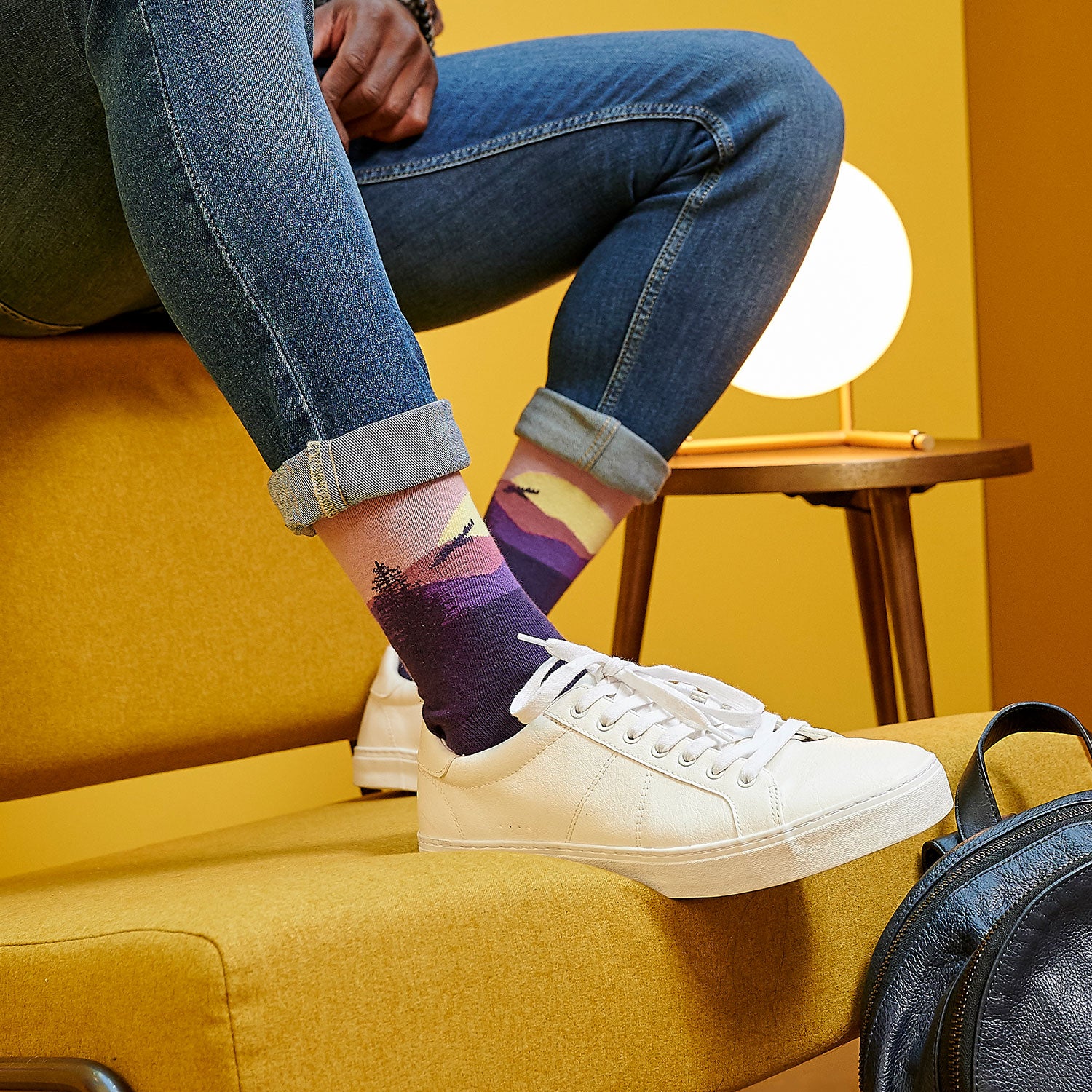
The History of Socks | Where Did They Come From?
Much like underwear, slipping on a pair of socks is part of most peoples' daily routine, which is why we rarely give them a second thought—aside from maybe the length or colour. Socks are such a basic part of our everyday lives that they're easily taken for granted, but imagine life without them? Because at one point, the socks we know and (dare we say love)—the ones we shove under beds and leave on floors and lose in the wash—didn't exist.

If we've sparked your interest in the history of socks, keep reading to learn how this wardrobe essential made its debut into the world.
SOCK HISTORY 101
The Early Years
It's hard to pinpoint the exact origin of the sock. Cave paintings and archeological finds from the Stone Age, circa 5000 BC, depicts a basic form of 'socks' made from animal skins which were then tied around peoples' ankles using pelts. Unfortunately, there are no surviving relics of these prehistoric socks.
Fast forward a few thousand years to 800 BC. The Greek poet Hesiod mentions socks or ‘piloi’ in his poem "Works and Days" which were made from matted animal hairs and worn under sandals—the shoe of choice amongst ancient Greeks, Romans, and Egyptians.
Speaking of the Romans, during the 2nd century AD, they were sewing together pieces of fabric to create 'undones'—the first sock that most closely resembles the modern garments we wear today.
The first woollen socks to be discovered can also be traced back to the 2nd century AD. Unearthed at Vindolanda in Northumbria—a medieval Anglian kingdom in what is now Northern England and south-east Scotland—were a child-sized pair of socks made from woven cloth that protected against the rough British weather.
"I have sent you ... pairs of socks from Sattua, two pairs of sandals and two pairs of underpants," reads a message on a Roman tablet found at Vindolanda, the site of an ancient Roman fort. A bronze razor handle was also retrieved, among thousands of other objects, from Vindolanda. Shaped like a human leg and foot, it depicts a woollen herringbone knitted sock.

Bronze handle of a Roman razor found at Vindolanda, Hadrian’s Wall, Scotland.
Also around this time, the first knit socks were being made in Ancient Egypt. The oldest surviving pair were excavated from Oxyrhynchus on the Nile and date back as far as 250 AD. They were made with a technique known as nålebinding, or "knotless netting", and feature split toes so they could be worn with sandals. Supposedly, King Tut's tomb contained several pairs of socks made from linen, alongside a generous collection of gold and jewels, proving their worth far exceeded that of today.

The earliest known surviving pair of socks, on display in the Victoria and Albert museum.
By the 5th century AD, socks spread throughout Europe. Worn mostly by holy people, they were known as ‘puttees’ and symbolized purity.
The Middle Ages
Like most goods during the Middle Ages, woven and knitted socks had become a status symbol of the nobility throughout much of Europe. Initially, they bore more of a resemblance to leggings but by the 12th-century feet were added. Since socks didn’t have an elastic band, garters were placed over the top to prevent them from falling down. As breeches became shorter, socks began to get longer and more expensive.

European nobleman’s stockings in the mid-1500s (the top is tied up when worn)
It didn't take long for the knitting loom to spread throughout Europe, which made socks more accessible to lower classes. After the Industrial Revolution socks became easier and cheaper to produce, and their appeal spread even further across European society. At the start of the 19th century, circular knitting frames were introduced which further mechanized sock production but led to the loss of many jobs.
Modern Times
As cheaper materials were used and factory production advanced, socks became mass-market goods, and sock fashion expanded to include even more colors, detailing, and fabrics.
In the late 17th century cotton became a popular choice for many garments including socks. But the real revolution in sock-making came in 1938, with the invention of nylon—a thermoplastic silky material. By combining these two fabrics together, the strength and elasticity of socks improved and led to a natural step forward in manufacturing. Years later, spandex or elastane was added to the blend to give socks extra flexibility and make them fit a wider range of wearers. This is the blend Adesso Man uses to create our signature socks.

And there you have it! The not-so-brief history of socks. What closet staple should we cover next?
STAY CONNECTED
info@adessoman.com
Join the Adesso mailing list and receive 15% off your first order



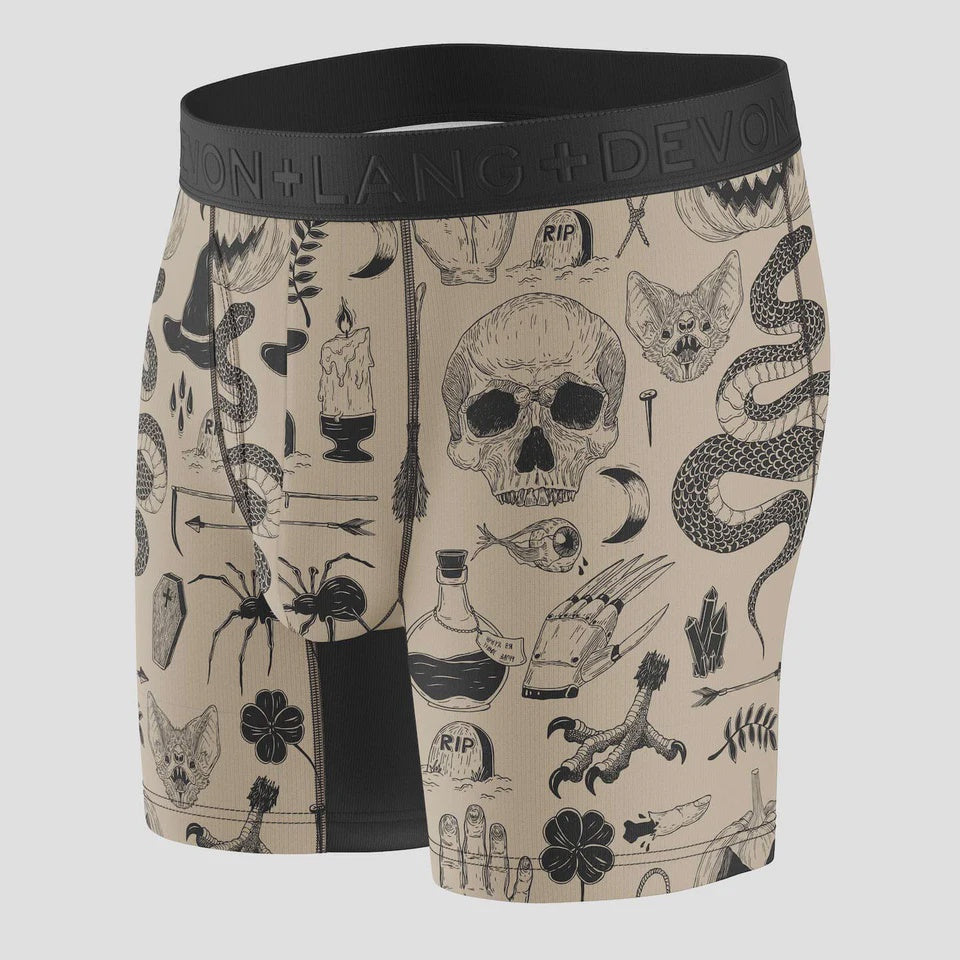


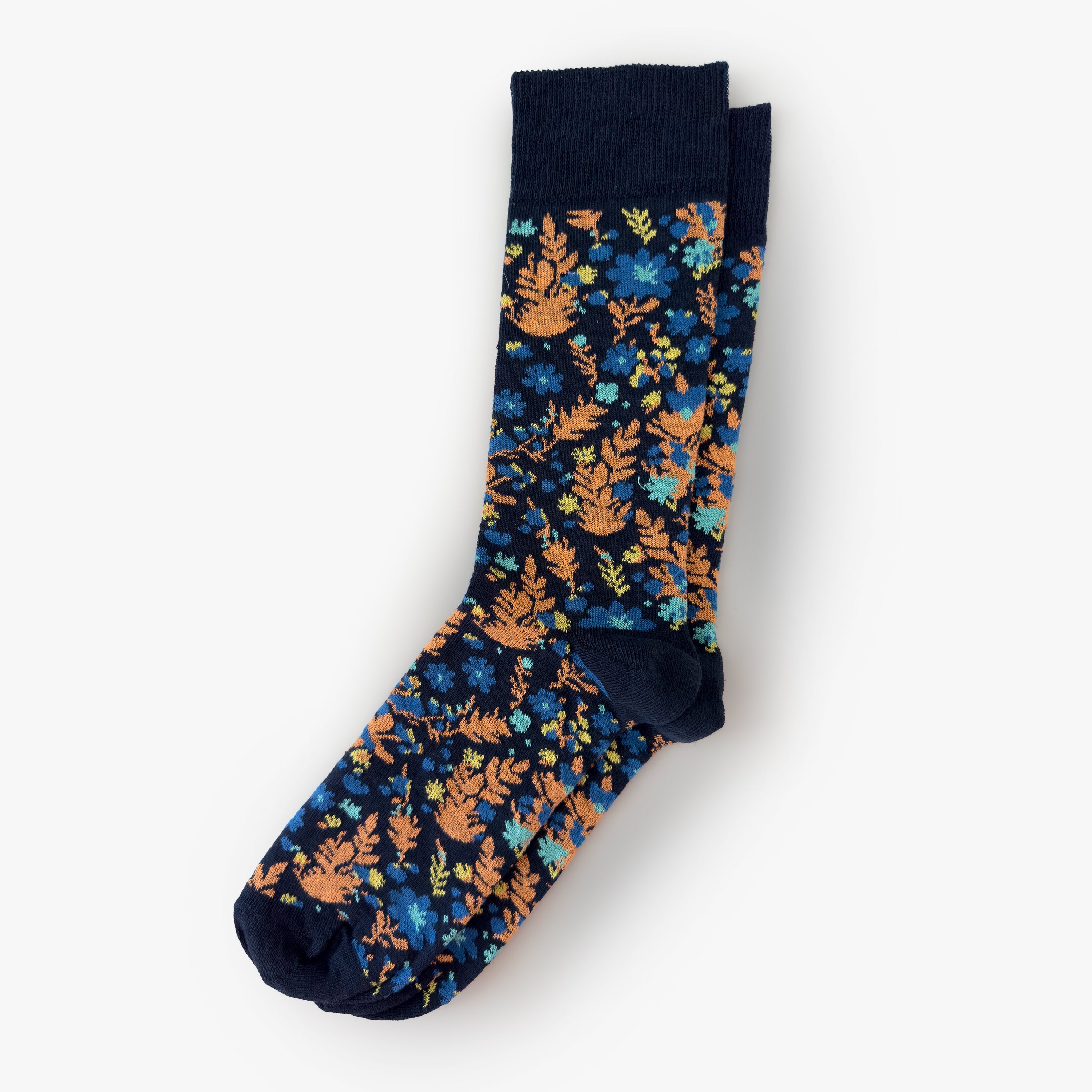



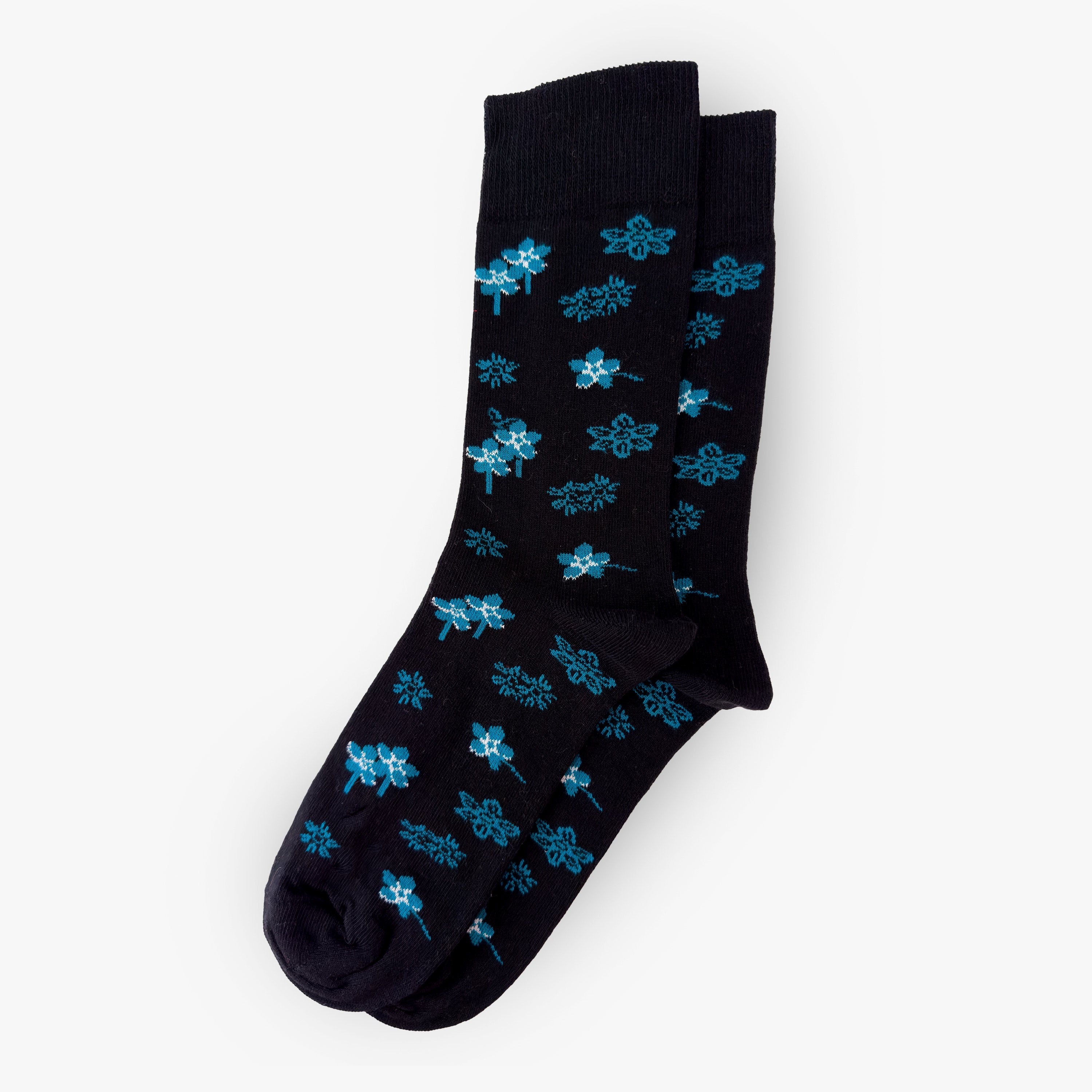
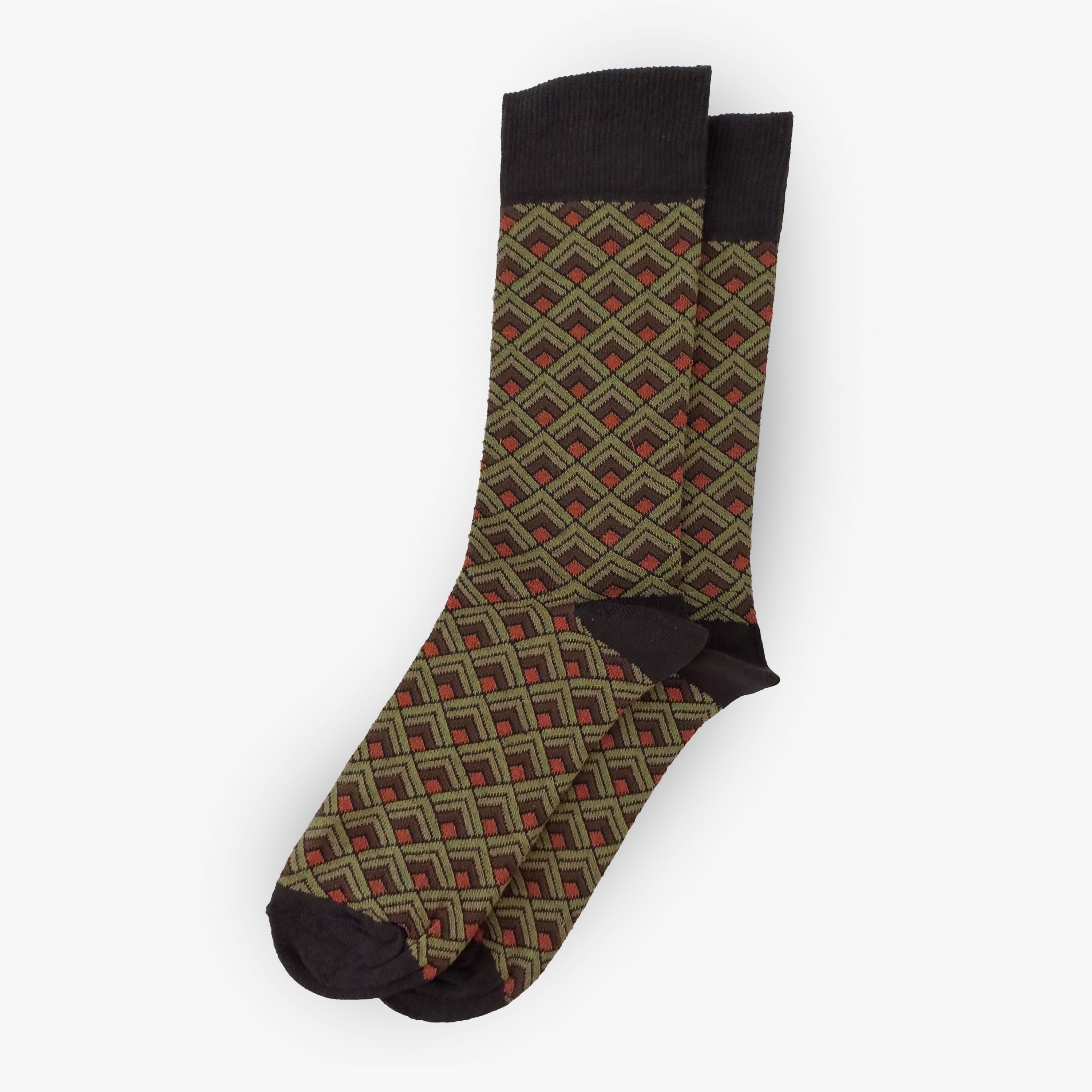


1 comment
Interesting read. This is very informative.
Kat
Leave a comment
This site is protected by hCaptcha and the hCaptcha Privacy Policy and Terms of Service apply.